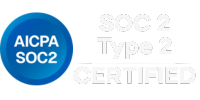Identity and access management (IAM) practices encompass several foundational elements. As a security leader, you have to purchase multiple tools to implement the capabilities below. While these tools are (hopefully) meeting your intended outcomes, you must continue to advance your practice as threats evolve. It’s key to prioritize each initiative below based on your business needs to ensure both basic and the latest threats are mitigated. But it’s also critical to understand how much budget and personnel is required on each IAM initiative and once an acceptable level of maturity is reached, you can to move resources to more critical work.
Continuously discovering and managing all identities across on-premise and cloud applications, infrastructure, and databases is the key to understanding where to focus your IAM resources. As you review each foundational element below, can you confidently say you have visibility into every identity, every account, and every privilege — both human and machine?
- Authentication: Verifying the identity of users or entities attempting to access resources, typically through methods like passwords, biometrics, or multi-factor authentication (MFA).
- Authorization: Determining what actions users or entities can perform once authenticated, based on their roles, permissions, or attributes.
- User Provisioning and De-provisioning: Managing the lifecycle of user accounts, including creating, modifying, and disabling accounts as needed, often through automated processes.
- Single Sign-On (SSO): Allowing users to authenticate once and access multiple resources without needing to re-enter credentials, enhancing user experience and security.
- Privileged Access Management (PAM): Controlling and monitoring access to highly sensitive resources or systems by privileged users, such as administrators, or privileged non-user accounts, such as some service accounts, through additional security measures and oversight.
- Identity Governance and Administration (IGA): Ensuring compliance with regulations and internal policies by governing access rights, certifications, and reviews of user access.
- Identity Federation: Establishing trust relationships between different identity domains or systems to enable seamless and secure access across organizational boundaries.
- Auditing and Monitoring: Tracking and recording user activities, access attempts, and changes to access permissions for accountability, compliance, and security analysis.
- Security Policies and Standards: Establishing guidelines, best practices, and controls to enforce security measures across the IAM infrastructure and ensure consistency.
- Identity Lifecycle Management: Managing the entire lifecycle of user identities, from onboarding to offboarding, including periodic reviews and updates to access privileges.
Implementing these elements effectively helps organizations mitigate security risks, ensure compliance, and streamline access management processes. But without the right mechanisms to gain visibility across all of your organization’s cloud and on-premises apps and infrastructure, you may not know your holes and vulnerabilities.





